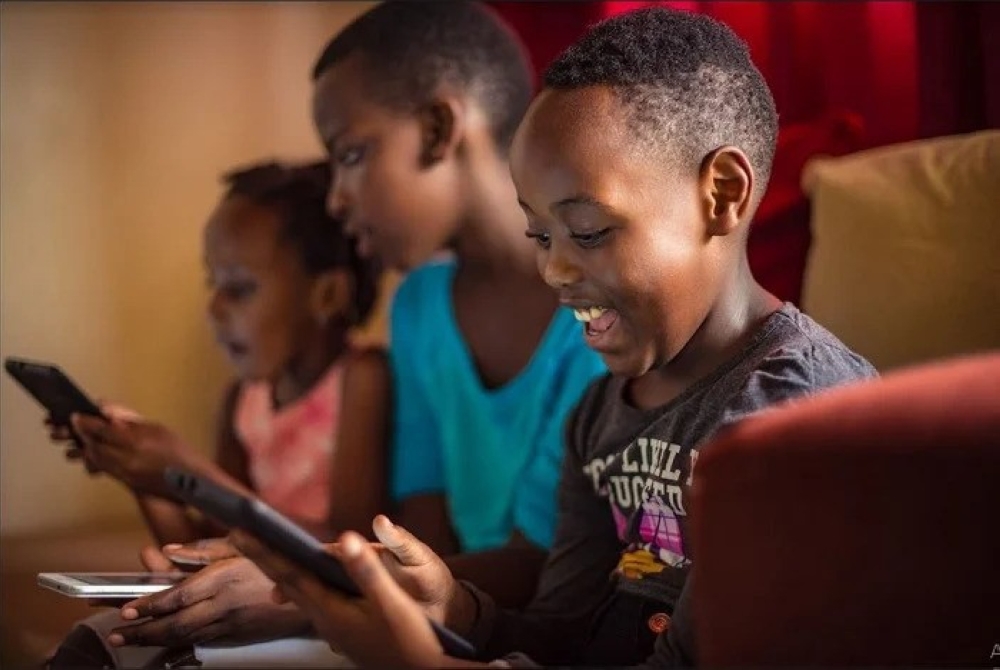

In an increasingly digital age, ensuring children’s safety online has become a top priority for parents. With a variety of tools, strategies, and resources available, creating a balanced and secure online experience for children is achievable.
Here’s a comprehensive guide to help parents regulate content, set healthy screen time limits, and foster safe digital practices for their children.
ALSO READ: The parent’s role in child online protection
Emmanuel Mfitumukiza, the Chairperson of the Internet Society Rwanda Chapter and Rwanda Safer Internet Day Committee Coordinator, told The New Times that parents can leverage built-in tools on devices, browsers, and applications to monitor and regulate the content their children access.
"Router-based parental controls, some routers offer parental controls that can block or filter content for all devices connected to the home network.
And Operating system controls can also guide on the content, most operating systems (like iOS, Android, Windows, and macOS) have parental control features to limit screen time, block inappropriate content, and set usage restrictions,” said Mfitumukiza.
Many web browsers offer Safe Search settings to filter inappropriate content from search results, parents can also use them to control the children's content from the inappropriate content, he said.
"We emphasise the importance of utilising built-in parental controls on devices to enhance children's online safety. These tools provide parents with an accessible and effective solution for regulating content without requiring additional software. They also offer essential online safety features, such as activity monitoring and screen time management, while maintaining privacy.
"Utilising these built-in tools parental controls on devices enhances online safety. Providing parents with an accessible and effective solution for regulating content without the need for third-party software, which can sometimes compromise privacy. These controls are designed with security and effectiveness in mind, offering features like activity monitoring and screen time limits while maintaining privacy.”
ALSO READ: Parenting: Is your child safe on internet?
Mfitumukiza also said that there are specific apps or software recommended for monitoring or blocking content on childrens’ devices.
"For Android users, digital wellbeing and parental control features are available for parents to manage device usage, app permissions and time limit, screen time and content access.
On IOS and Mac, Apple provides Screen Time features that enable parents to set app limits, monitor screen usage, and restrict content access directly through the device settings. Windows users can use built-in settings, such as Family Safety, to manage screen time, app usage, and online content for children,” said Mfitumukiza.
"We strongly discourage the use of third-party applications for parental control purposes. Many third-party solutions lack robust security measures and may expose sensitive information, including children's online activities, location data, and personal preferences, to potential breaches or misuse.”
We recommend utilising device-based or built-in parental control tools provided by trusted operating systems and manufacturers. These tools are designed with user privacy as a priority, offering effective solutions for monitoring and managing children's online experiences without compromising their data privacy and security, said Mfitumukiza.
Balancing screen time is vital for children’s mental and physical well-being. Mfitumukiza said that many parents are interested in setting screen time limits but may not fully understand the reasons behind their necessity.
It is important to clarify what you aim to achieve by implementing these limits without infringing on a child's right to explore and engage with the digital world.
"Setting healthy screen time limits involves balancing children’s rights and benefits with the purpose of screen time limits. Parents can ensure balanced screen time limits through open dialogue, discuss screen time expectations and involve children in setting boundaries,” he said.
"Parents should model balanced screen time themselves, showing the importance of real-world interactions and other activities.
Incorporate Screen-Free Activities Set designated times when no screens are allowed. Leverage Screen Time Features, use features like iOS Screen Time or Android Digital Wellbeing to set automatic daily limits for specific apps or categories.”
Walter Osakwe, a Tech expert says the access to inappropriate content can expose children to privacy violations and security vulnerabilities, as it may involve interacting with harmful websites, oversharing personal information unknowingly, or falling victim to cyber threats like phishing and malware.
"Based on the Rwanda Child Online Protection Policy, children are likely to face risks associated with indecent images of children, adult pornography, violent, discriminatory or hateful content, fake news or false narratives, and content that promotes risky or unhealthy behaviors,” he said.
"Parents must remain vigilant, educating their children about these risks and guiding them on how to navigate the digital world safely. Ensuring that children consume content suitable for their age is crucial for their development.”
Mfitumukiza also said that he encourages parents to read the user guides of applications their children access to fully understand whether they are appropriate for their age, engage with content alongside their kids, utilize content rating systems, use child-friendly platforms such as YouTube Kids, and take advantage of digital literacy resources to enhance their understanding of emerging risks and how to mitigate them.
"Parents can also use recommendations from trusted content reviewers, which provide detailed reviews of movies, games, apps, and websites, highlighting which content is age-appropriate,” he said.


